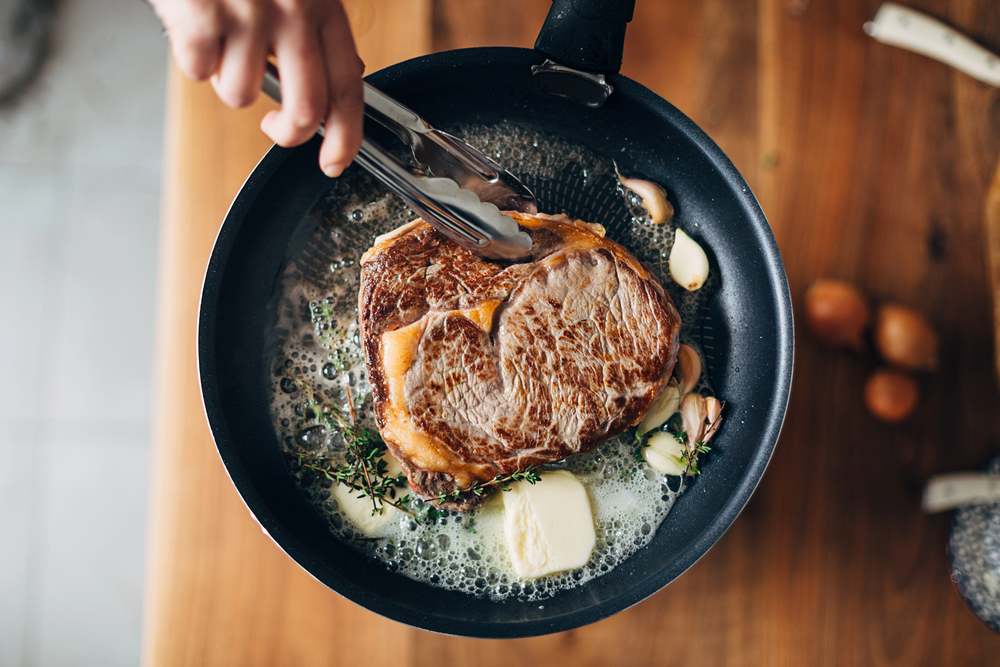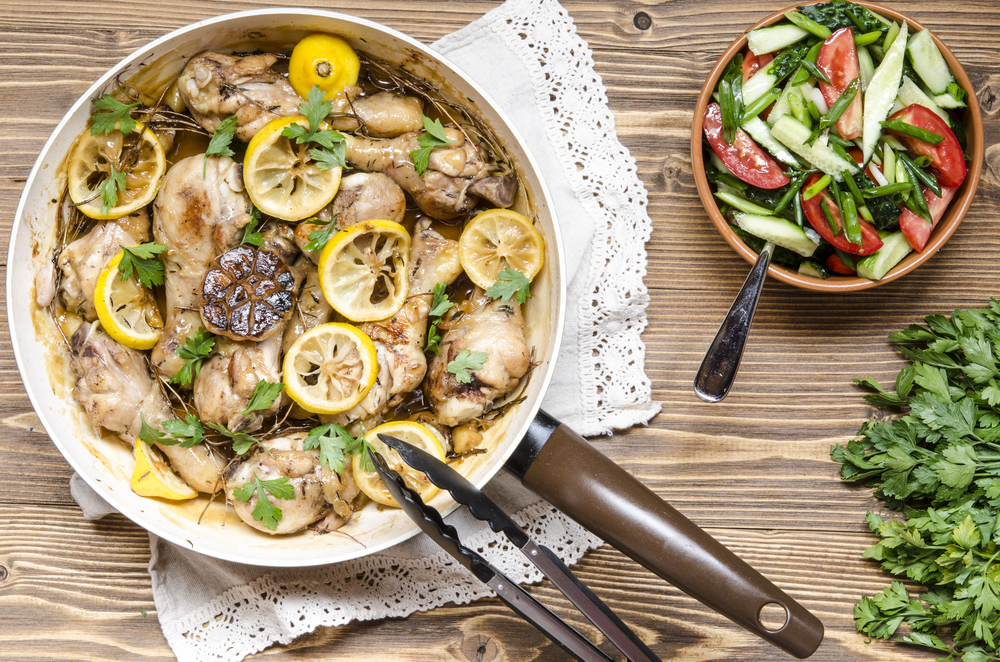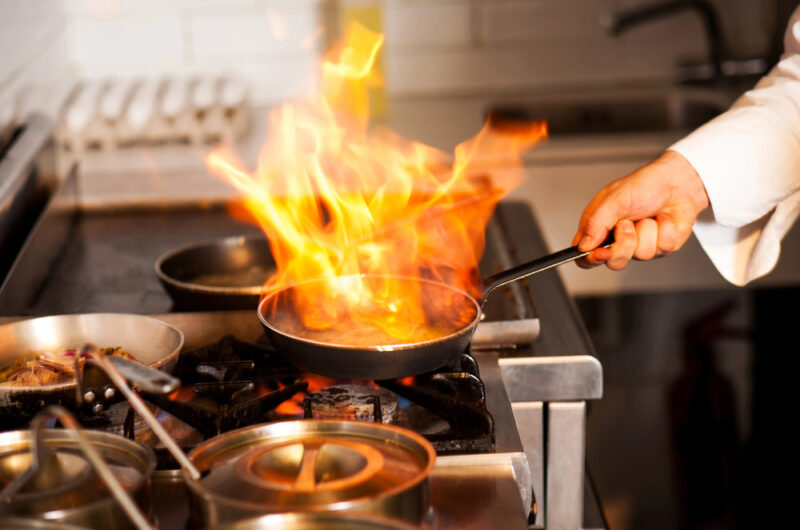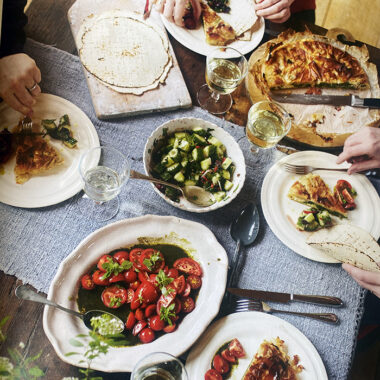Today, I thought it’d be fun to talk about some tips from Gordon Ramsey about cooking. These are things that he advises, some of which I’ve tried, and others not yet. I find it really interesting to look at professional chefs, or at chefs like Jamie Oliver who aim to help ordinary people like you and I to be able to cook better, to make things easier and healthier, and et cetera. I’m going to do a brief series, and talk about tips from some other chefs as well, but for today it’ll be Gordon Ramsey. We’ll talk about the important things that he says or that he teaches online in various places, whether it be on Masterchef, in his home cooking videos, et cetera.
Number one – I’m sure you’ve seen videos with Gordon Ramsey sharpening his knife with a knife sharpener. He goes back and forth, back and forth. He says that knife control is so important and that you should use a sharp knife. He says that a dull knife is more dangerous because it can slip, so he always sharpens his knives. I know professional chefs will hate this, but I do find that serrated knives are easier to use because they cut through tomatoes and everything else well, and they don’t have to be sharpened. But if you are using an ordinary knife, it’s good to keep it sharp, and to be careful.
A wooden cutting board is great because it catches the knife – it can’t slip on there, and it’s healthier than a plastic cutting board. Keep your fingers out the way – keep them curled back. People call that a claw grip. Gordon Ramsey shows you how to do it. You should watch a chopping video of his on YouTube. Keep your fingers in a claw shape so that you have your knuckles out of the way as the knife chops, and use a sharp knife so that you’ve got good knife control.
Number two – learn to chop with rhythm so that you can be efficient. Use a slicing motion, and keep your knuckles out the way. You’re not hacking, but you’re effectively slicing.
Number three – organize your station in advance. Sort all your ingredients, et cetera. Have everything that you’re going to need – all your equipment, all your ingredients, and go as far as prepping and measuring each thing before you start cooking. It reduces chaos, and it leads to better results. You’re prepared, and you don’t have to waste time weighing out something, or putting something into a bowl, or from the bag breaking open and it’s spilling. Basically, you have all the bits of the meal ready, and then you can focus on the cooking. You can focus on the tasting and making sure it works, that it doesn’t burn, and that it looks good. Focus on the right parts of your cooking.
Number four – let the pan do the work. Don’t move your meat around too much once it hits the pan. Make your pan nice and hot to start with. Let it sear, let it build that flavor, and don’t fiddle with it. Don’t turn the meat a lot. Wait until it’s ready on one side before you flip it over and do the other side. I’m sure you’ve seen the vegetable technique where Gordon Ramsey tosses them back and forward. It’s a good one.
Number five – season from a height. This is a good Gordon Ramsay tip. If you season from a height, it distributes the salt and the pepper more evenly across the surface of the food. Having a bowl or a jar of salt is much better than using a salt shaker. You can grab a pinch full and sprinkle it on the food, and it really does effectively season the whole amount.
Number six – after cooking any meat, rest it. Especially with steak, you need to rest it for the same amount of time as you cooked it for. This makes the juices stay in the meat – it reabsorbs them. It makes it stay tender, and it makes sure that it’s properly cooked through. Even with chicken, cook it in the oven, take it out, and give it a rest after cooking, but before eating. This really does add to the flavor and to the tenderness of the meat.
Number seven – use butter. Gordon Ramsey is a big user of butter, whether it’s for scrambled eggs, finishing a sauce, finishing a steak, or for salmon. He says you should use butter at the end for richness. If he’s cooking a sauce, he’ll put a knob of butter in at the end and finish it off. He also adds sour cream to scrambled eggs at the end.

When he’s cooking a steak, he’ll add a knob of butter at the end, and maybe a fresh sprig of rosemary. He’ll baste the steak or salmon with a knob of butter. It helps it finish cooking, and it adds that delicious butter flavor. He’ll usually put the herbs in the butter to infuse it, and to create a glossy, flavorful finish.
That brings us to number eight – layer your flavors with herbs. Don’t just throw the herbs on top, but as we mentioned, infuse the oil or butter with the herbs. Use a fresh sprig of rosemary or thyme from your kitchen garden or wherever you can get it. You can buy some fresh herbs. Add garlic to the butter as well during the cooking, and then as you baste your meat or fish, it adds those layers of flavor from the herbs. If you’re doing roast vegetables in the oven, you can put some butter and herbs on them, and baste them mid-cooking so that the herbs can add that flavor.
Number nine – this is probably one of Gordon Ramsey’s most important and most known tips – taste as you go. If you watch Master Chef or a cooking show that involves him, he’ll always say “Did you taste it?” Taste your ingredients. Taste the finished product. Taste as you go, because that guides your flavors. Whatever you’re making, if you taste it as you go, you start to get a feel for it, and you can see early on what it needs. It’s even more important to taste it at the end – “Does it need more salt? Does it need a little bit more tomato flavor, or more vinegar, or more lemon juice?” Why serve it if you don’t taste it? You’ve got to make sure that it’s just right. Always taste your food as you go, and taste it again at the end before serving it.
Number ten – when you’re making pasta, cook it aldente, which means cooked well, but not too soft. Then when you add the sauce, that gives it a final little boost to make it properly cooked. Mix the pasta into the sauce at the end, and that’ll make it perfect for eating, but don’t overdo it before you add the sauce. Drain it early, and finish cooking it in the sauce. It absorbs more flavor that way.
Also, add a little bit of the pasta water that you’ve reserved back into it. When you drain the pasta, keep a tiny bit of the water, and then add it back. That helps to thicken and to bind the sauce, because it’s got a little bit of starch content. So, cook the pasta aldente, and finish it in the sauce with a little bit of pasta water that you’ve kept back.
Number eleven – your meat should be room temperature before you cook it. Take your steak out of the fridge fifteen to twenty minutes, or even half an hour before you cook it to make sure it comes to room temperature. That’ll make it more tender, and it’ll cook evenly. Do this with your fish, and especially your chicken and beef. Take them out of the fridge half an hour before cooking, and make sure they come to room temperature.

That’s also a good time to marinate it, whether you’re just adding salt and pepper to your steak, or if you’re marinating it with something olive oil. The meat’s better when it’s cooked from room temperature, so use that time to marinate it.
Number twelve – season under the skin. This especially applies to chicken. So often, Gordon Ramsey will separate the skin from the meat, and rub herbs, butter, or seasoning like salt directly on the meat. It gives it much more flavor. We all like that crispy flavored skin, so you can flavor the skin as well, but it’s great to pull the skin aside and add some seasoning in there.
Number thirteen – balance your seasonings and flavors. Salt enhances the flavor, but don’t just make your food salty. You need to make sure you season every part of your whole. If you’re making lasagna or a pasta dish, season your pasta when you’ve drained it. Add some olive oil, salt, and maybe some parmesan cheese to that. This is me talking now, not Gordon Ramsey, so if I’m saying it wrong, sorry Gordon.
Add everything you want to the pasta, and you should also season your bolognese or meat sauce, and anything else you’re adding to the dish, maybe cheese sauce. You need to make sure everything tastes good separately, and then it’ll taste good together. Gordon Ramsey says that with seasoning, you need layers and balance. You have acid, like lemon or vinegar, and you have sweetness. The acid will brighten the dish – a squeeze of lemon, a dash of vinegar, or some fresh herbs, and then decide if you need some sweetness of some kind. In some dishes, you’ll use honey or sugar, but always balance the richness with acidity.
Number fourteen – clean as you go. If possible, wipe down the area where you’re working often. I often have to remind my sons of this. If you’re making a dish, and the counter gets dirty, and then you remove a dish and add a new one, that one’s going to be filthy underneath from all the stuff. Then if you move it somewhere else, it makes that place dirty, so clean as you go.
Make sure that you put ingredients away when you’re finished using them. Obviously, when you have a gap in your cooking, have a full sink ready where you can clean utensils, or at least soak them so that the dirt doesn’t get too hard and dry. Keep things tidy and orderly so that you know where everything is. That’s how professionals do it.
Number fifteen – respect your ingredients. Trust your ingredients, and let them shine. Simplicity is important. If you take a really good steak, or a really good piece of salmon, some really fresh vegetables, and you simply steam them or cook them in the pan with a few good seasonings, then that simplicity always wins. Don’t worry that it’s not going to be interesting enough or tasty enough, because good ingredients make good food. Trust that that’ll happen. Get good quality ingredients, and enjoy using and eating them.
So, that was a few tips from Gordon Ramsey. You make them your own and see how they apply in your cooking. Hopefully they’ll inspire you to do things in a way that elevates your food, makes it fun to cook, and makes it delicious for your family.





